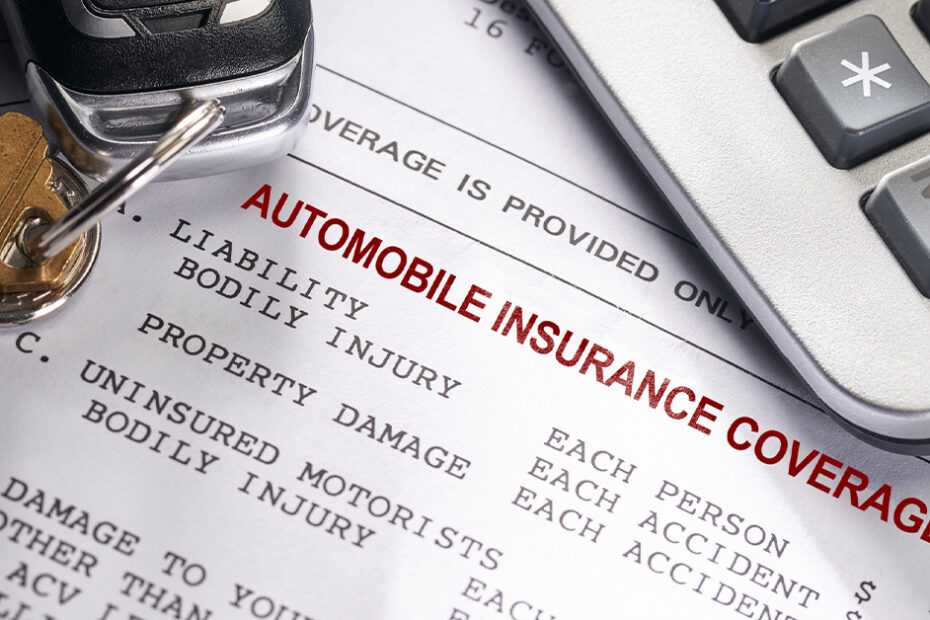When it comes to auto insurance, certain circumstances usually result in your rates increasing. For example, being involved in an at-fault accident or receiving a traffic violation are reasons a provider may increase your premium. However, even with a clean record, you’re still prone to increased auto insurance rates due to factors out of your control.
According to recent reports, many drivers will soon face higher premiums, with the average motorist paying $1,707 annually. If you’ve recently experienced an increase and aren’t sure why, the reason may be a factor that’s beyond your control. To help you save, we put together a list of the factors affecting your auto insurance rate—and how you can lower it.
Reasons for an Auto Insurance Rate Increase
Since multiple factors influence your premium, it’s important to understand which you can, and can’t, control.
What You’re in Control Of

Being a cautious driver. Being a cautious driver can help you save on your auto insurance rate. Insurers classify drivers with multiple accidents and traffic violations as insurance risks, which means higher premiums. Practicing safe driving will help you avoid accidents, prevent traffic stops, and show insurers you’re not a risk.
Your claims history. In many states, the number of claims you file can impact your auto insurance rate. Generally, an insurance provider will view a long claim history as a red flag. If you’ve been previously classified as a safe driver, filing too many claims can cause providers to view you as a risk.
Your credit score. Depending on your state, insurance providers can use your credit score to determine the price of your coverage. In such cases, a low credit score could mean paying a higher monthly premium. However, insurers in California, Hawaii, and Massachusetts cannot use your credit score as a factor when determining your auto insurance rate.
Your vehicle make and model. Some cars are cheaper to insure than others. For example, trucks are cheaper to insure than sedans, on average. Additionally, certain vehicles are statically more likely to be stolen than others, making them more expensive to insure.
What You Cannot Control
Inflation. One of the main reasons most drivers will experience higher auto insurance rates this year is inflation. In 2021, the consumer price index rose 7%. This means that, on average, consumers are spending 7% more on goods and services than they were a year ago. Because the cost of repairs, parts, and vehicles has increased, insurers must raise rates to ensure they can continue paying out claims.

More drivers on the road. With each new driver on the road, the chance of an accident occurring increases (known as “accident frequency” in the insurance industry). Whether or not you’ve personally been in an accident, increased accidents lead to higher premiums.
Zip code data. Your zip code is a crucial factor providers consider as it affects the likelihood of your car being damaged. Generally, those living in urban areas experience higher theft rates, vandalism, and accidents than those living in rural areas, which leads to higher premiums.
Age. The impact of age on your insurance premium is significant, with teen drivers paying steeper prices for coverage than any other age group. Similarly, rates also go up for senior drivers over 65. In California, years of driving experience replaces age as a factor.
How to Lower Your Auto Insurance Rate
Shop around. The simplest way to save on your auto insurance rate is to shop around. Coverage costs vary significantly between insurance providers, and each treats factors differently. Therefore, we recommend comparing rates each time your policy is about to renew to maximize your savings.

Auto insurance discounts. Insurance companies offer various auto insurance discounts that can help lower your premium. Whenever speaking with your agent, be sure to ask if there are any discounts that you may qualify for. Here are just a few types of discounts we found during our research:
- Good student discount: Available for teen and student drivers with a good GPA.
- Good driver discount: Available for drivers who meet the state’s definition of a good driver.
- Group/association discounts: Some providers offer association discounts for those involved with associations like AAA, Costco, Sam’s Club, and more.
- Anti-theft discount: Available for drivers who install approved anti-theft devices to their vehicles.
- Multiple policy discount: You may be eligible for discounted rates when you combine auto and home coverage with the same provider.
- Pay in full discount: You may be eligible for a discount if you can pay for your coverage in full upfront.
As a reminder, discounts vary by state and insurance provider. Be sure to check with your insurance agent for a detailed list of the discounts available to you.
Increase your deductible. As with most insurance plans, the higher your deductible is, the less you’ll pay for your premium. Increasing your deductible is a quick way of lowering your auto insurance rate, but do so carefully. The higher your deductible, the higher you’ll pay out of pocket, so be sure to choose a price you can afford.
Save On Your Auto Insurance With AIS
With auto insurance rates increasing across the board, finding ways to save is critical. At AIS, we work with our network of insurance partners to find you the best coverage at the right price. Give us a call at (888) 772-4247 or get a free online quote to start saving today.
The information in this article is obtained from various sources and offered for educational purposes only. Furthermore, it should not replace the advice of a qualified professional. The definitions, terms, and coverage in a given policy may be different than those suggested here. No warranty or appropriateness for a specific purpose is expressed or implied.


